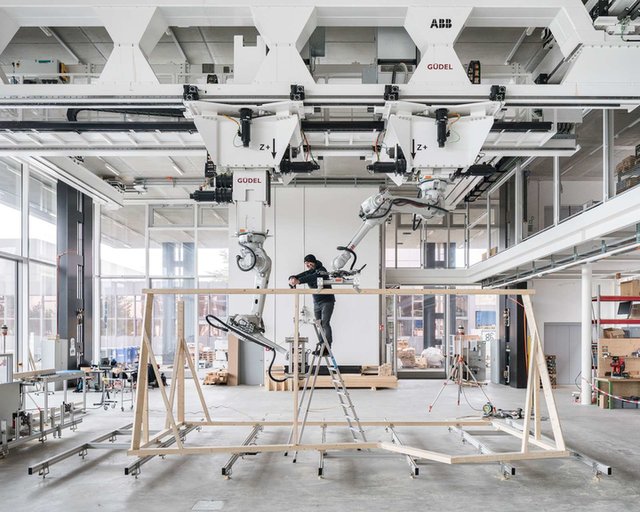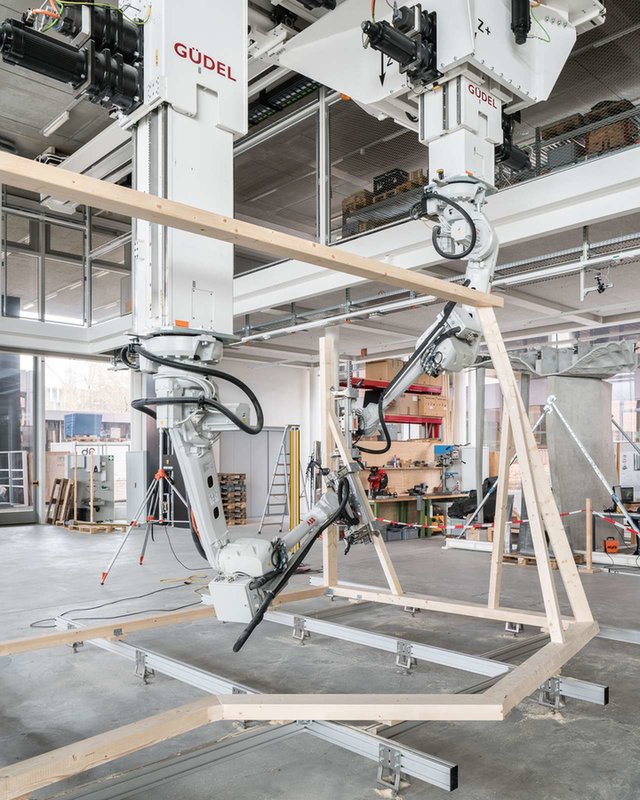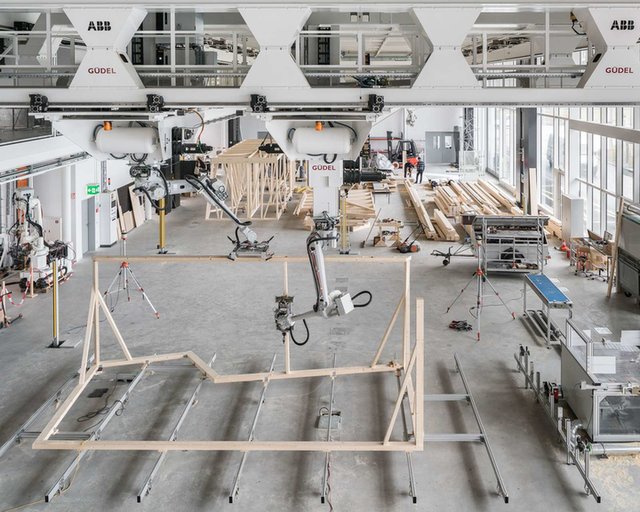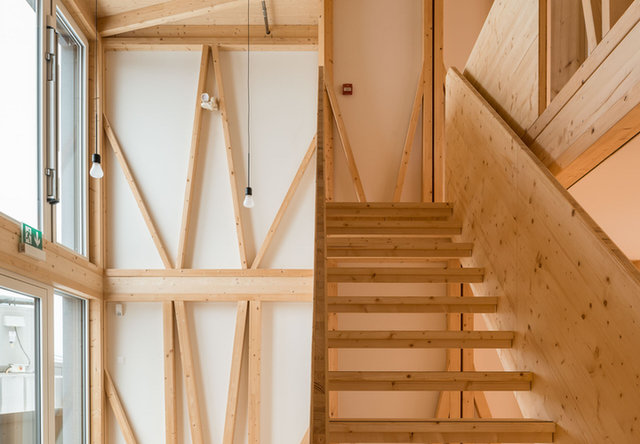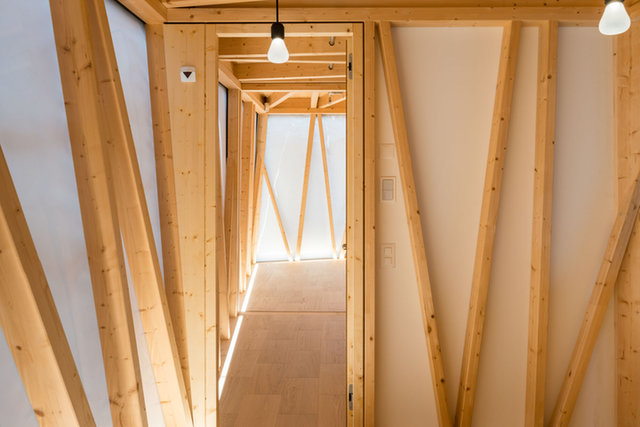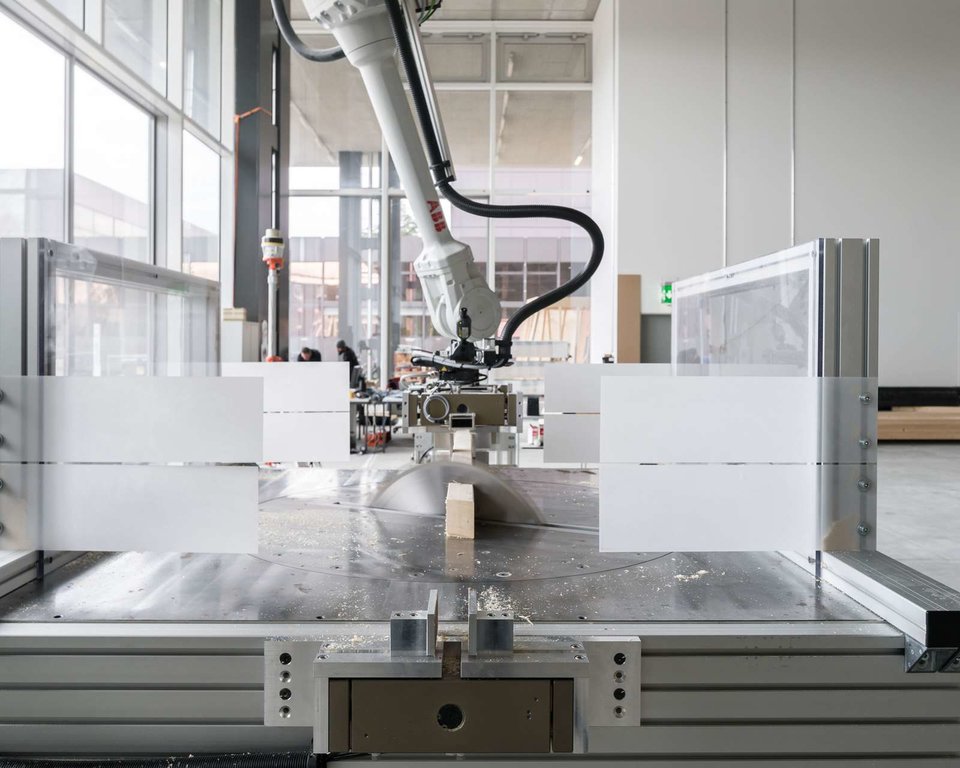
Spatial Timber Assemblies: The Robotic Construction Method Creating New Design Possibilities
A new robotic construction method developed by ETH Zurich is creating new possibilities for timber in architecture. Lucy Ingham looks at how Spatial Timber Assemblies could impact design
SCROLL DOWN
Timber construction is enjoying something of a renaissance at present, and now robots are being brought into the mix.
Researchers at ETH Zurich’s Chair of Architecture and Digital Fabrication have developed a digital construction method using robots to build timber modules. Known as Spatial Timber Assemblies, the project represents a key step in the development of robotic construction technologies, but its implications for the design of timber structures could prove more impactful.
Digitalisation is increasingly harnessed for timber construction, but many of the current approaches come with significant limitations. Generally timber is cut to size using machines, but then has to be manually assembled, typically requiring reinforcement plates that put significant restrictions on the overall design.
By giving robots the task of not only cutting the material, but assembling it using a sophisticated system that continually adjusts the robots’ movements in response to the state of construction, Spatial Timber Assemblies is creating the potential for designed not previously possible using such technology.
And while the project is not yet at a commercial stage, it has been successfully demonstrated in a real-world setting at DFAB House, an innovation construction site in Dübendorf, Switzerland. Here the robots have been used to build a two-storey residential unit made up of six geometrically unique timber modules spanning over 100m² of floor space.
How the robotic construction method works
As with all projects, the robots start with a computer-aided design model that provides instructions on how to cut and arrange the timber beams. Custom created for the project, it supports the development of geometries with up to 487 unique timber beams.
Each beam is selected by the robot, which then saws it to the appropriate size, before handing it over to a second robot that drills the required connection holes. Both robots then work together to position the beams into the precise spatial layout dictated by the design, with an algorithm in play to prevent collisions.
At this point, a human is needed to manually bolt the structure together.
The approach allows for the structure to be developed off-site, before being transported and assembled, as was the case with the structure at DFAB House.
The potential for Spatial Timber Assemblies to change design
The creative potential of the technology is significant, allowing for complex structures that previously would have been too complex and challenging to realise in timber. However, the technology also has implications for the design process.
“If any change is made to the project overall, the computer model can be constantly adjusted to meet the new requirements,” explained Matthias Kohler, professor of architecture and digital fabrication at ETH Zurich.
“This kind of integrated digital architecture is closing the gap between design, planning and execution.”
It also has implications for construction, particularly when it comes to the quality of structures.
"Digital fabrication depends on the tremendous expertise required for craftsmanship,” said Kohler.
“Conversely, digitalisation can improve craftsmanship and open up new opportunities."

